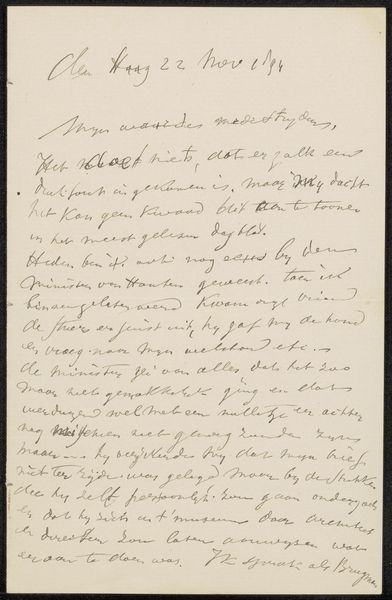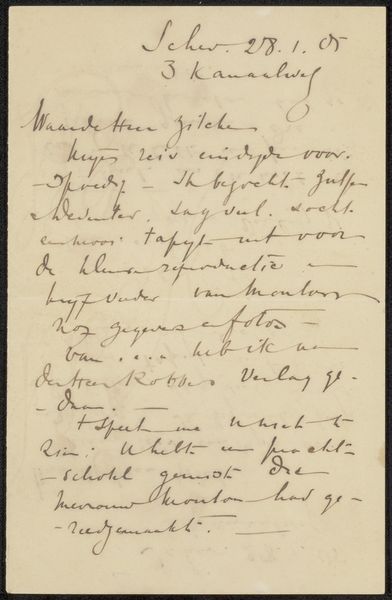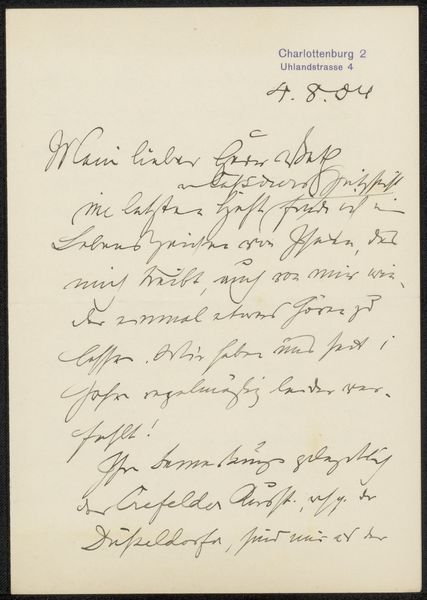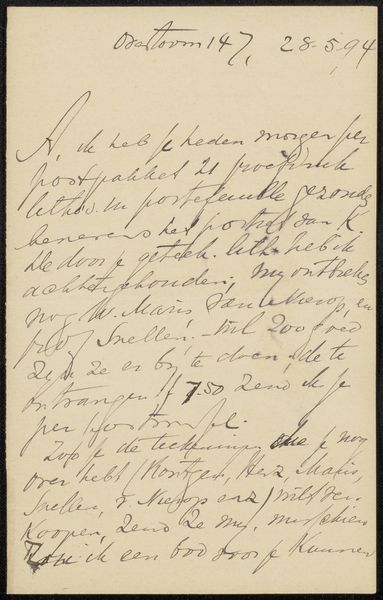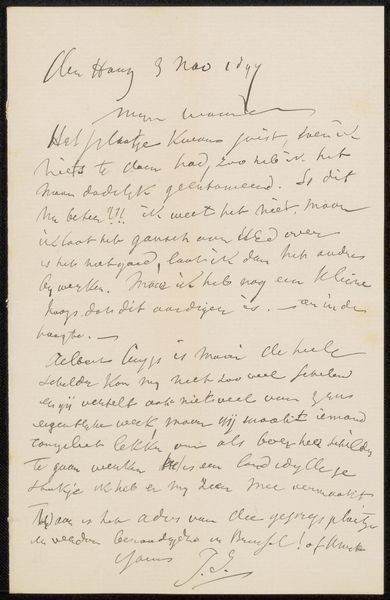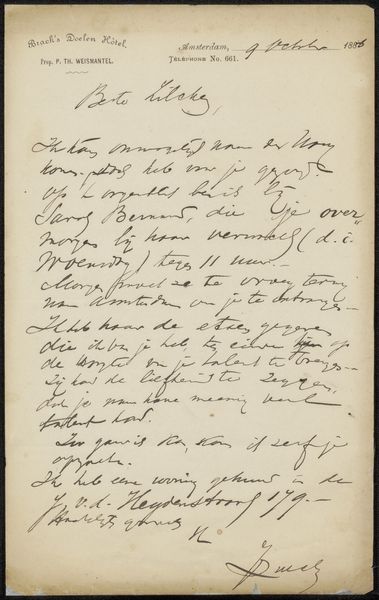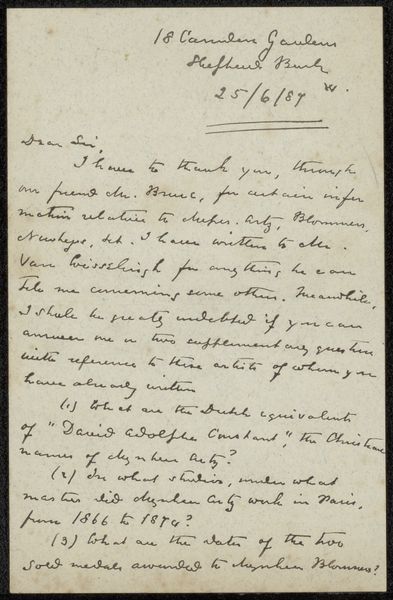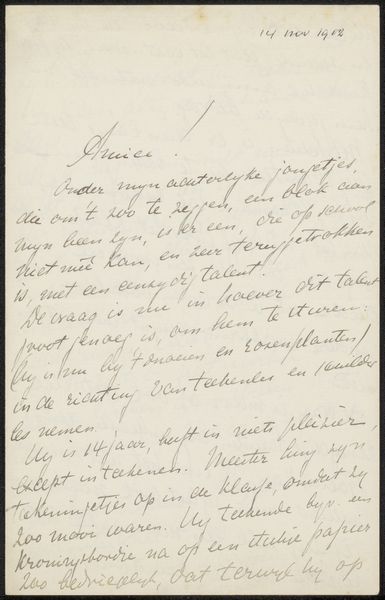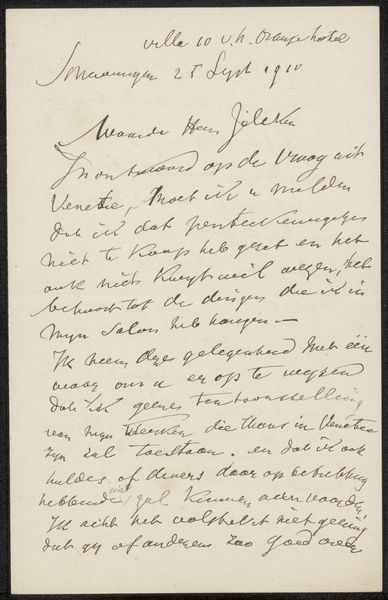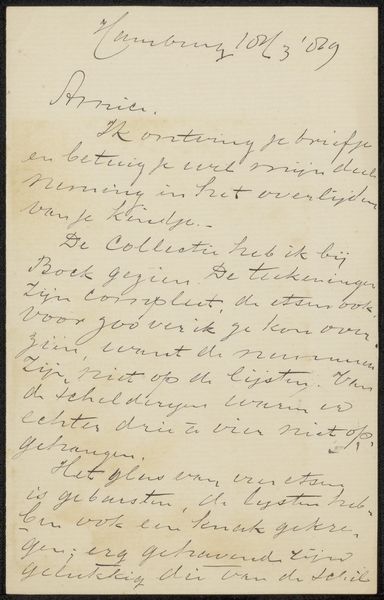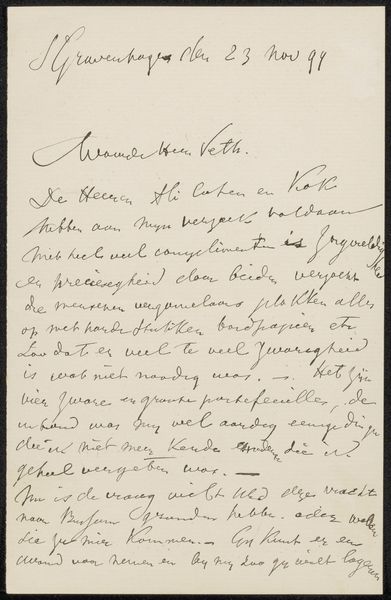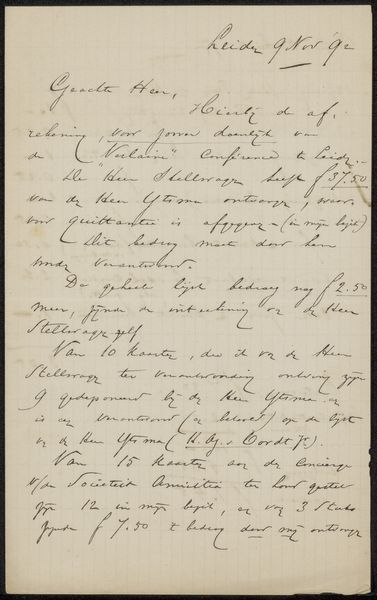
drawing, paper, ink, pen
#
drawing
#
paper
#
ink
#
pen-ink sketch
#
sketchbook drawing
#
pen
Copyright: Rijks Museum: Open Domain
Editor: Here we have "Brief aan Filippo Tessaro," which translates to "Letter to Filippo Tessaro," possibly from 1890, by Bernardus Johannes Blommers. It's done with pen and ink on paper. What catches my eye is the hand-written quality – you can almost feel the artist's hand moving across the page. How do you approach a piece like this, with such clear indications of process? Curator: I see this drawing as a record of labor, both intellectual and physical. Look closely at the pressure applied to the pen; there's a variance that suggests both urgency and care. The material conditions – the quality of the ink, the texture of the paper – dictated the final form. Blommers was negotiating material constraints while trying to convey specific information, perhaps negotiating a sale of another artwork considering what can be read as a price mentioned on the page. Editor: So, you’re suggesting the act of writing itself becomes a key element? It almost transcends the message. Curator: Precisely. This isn't just about the words; it's about the physicality of communication. Consider the social context: a handwritten letter was a crucial mode of artistic exchange at the time. He’s managing his artistic practice, and potentially income, through this artifact. Did he do it by himself? The tools he used point to both ingenuity and certain amount of wealth to use such specialized means. Is that something you’ve considered? Editor: I hadn't, but I see what you mean! I was so focused on the immediate impact of the text that I overlooked its broader implications for the artist's workflow. Curator: Material analysis can illuminate so much about an artist's practice and the world they inhabited. Hopefully now, you can consider things like this the next time you encounter written correspondence from any kind of artist. Editor: Absolutely. It's like peeling back a layer to reveal the underlying structure of artistic production. Thanks for that, I'll make sure to explore that from now on!
Comments
No comments
Be the first to comment and join the conversation on the ultimate creative platform.
